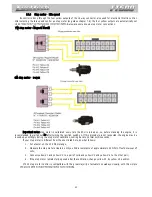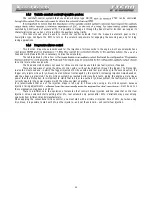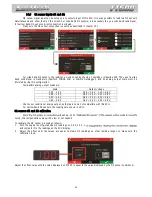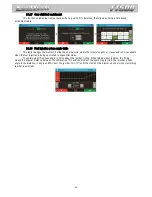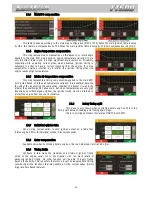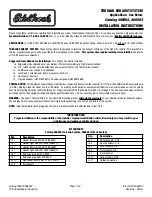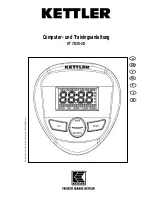
54
17
Starting the engine for the first time
This chapter shows final steps before the engine first start and guides the user through checking and calibrating all
the sensors and actuators of the motor.
17.1
First engine start
Try not to push the starter motor and the coils by cranking the starter too long on the first start. Check if the fuel
pump is turned on and if there is fuel pressure on the line. Check if the ECU reads the correct RPM in its dashboard and
to check for spark).
On engines fueled with ethanol or methanol, use gasoline on the throttle body to make the first start smooth.
When using mechanical fuel pump, make sure the pump is priming properly during cranking or first start.
When the engine starts, keep it at a fast idle and double check oil pressure and the coil and igniter temperature.
Check if the RPM is being correctly shown on the ECU display (if possible, compare to an external tachometer)
and if throttle variations coincide with TPS and vacuum readings.
17.2
Ignition calibration
Once the engine has started, before any kind of test or tune, the ignition calibration must be performed. This
calibration is very important to make sure the timing the ECU reads is really correct with the engine.
This function locks the timing to 20° (or 0°) on any RPM, this means, if the engine starts but has no idle, you can
rev it up and keep it in something around 2000rpm to perform the calibration. Avoid RPM variations as this causes
variations on the timing light readings.
s and calibrations menu, then Ignition calibration
Ignition calibration with distributor
When entering this function, the ECU shows
CALIBRATE THE
DISTRIBUTOR UNTIL IT READS 20° (or 0°) ON THE TIMING LIGHT
With this
message on the screen, point the timing light to the crankshaft TDC mark.
mark for cylinder #1. Point the timing light and turn the distributor until the
ECU. Ignition calibration is finished.
Ignition calibration with crank trigger
Cars originally equipped with crank triggers, usually do not have the TDC mark. This mark then should be done
by stopping the engine on cylinder #1 TDC of compression using a dial-comparator. It is very important to be precise
when making this timing mark; the slightest error will ultimately affect ignition timing on the engine.
In these systems, usually the ignition is controlled on wasted spark,
with one spark on the combustion stroke and one on the exhaust stroke. As
the timing light reads both sparks, it usually shows 40° BTDC of timing, but
the actual timing is 20° BTDC. Be sure to consider this when calibrating the
timing.
-
pports wasted
spark and reports accurate timing. Make sure you understand and use the
timing light correctly!
As it is not possible to turn the crank trigger as we do on distributor
systems, the ignition calibration screen has a compensation that must be
24°BTDC, a compensation of -4° is needed to read 20° BTDC on the crankshaft TDC mark.
When the timing light is reading double the real timing (wasted spark), if the timing on the timing light is 46º, the
compensation that must be set is -3º, instead of -6º.
To check if your timing light is reading twice the real timing, advance 5° and check the timing on the engine
again. If the timing has advanced 10°, the timing light is reading double the real timing.



